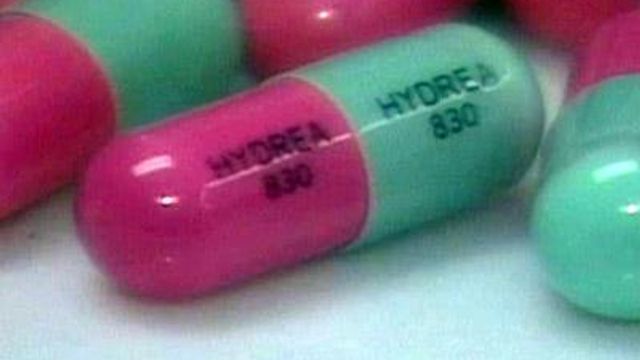Health Team
Medication can help sickle cell patients
UNC pediatrician Dr. Rupa Redding-Lallinger, co-director of UNC's sickle cell program, says Hydroxyrurea may help patients with the disease live longer.
Posted — UpdatedCHAPEL HILL, N.C. — About 1,000 babies are born each year with sickle cell disease, according to routine blood tests performed on newborns in every state.
Both of Aisha Shawntae Copeland's parents had the genetic trait for sickle cell – which gave her a 1 in 4 chance of having it. Copeland was diagnosed as an infant.
“The older I get, the worse it gets,” Copeland said.
Copeland, now a mother and health care worker, is hospitalized for the disease about twice a year.
“It causes the red blood cells to take abnormal shapes and to flow poorly through the blood vessel,” UNC pediatrician Dr. Rupa Redding-Lallinger, co-director of UNC's sickle cell program, said.
The odd-shaped blood cells break down quicker, causing anemia. They don't carry enough oxygen to tissues and organs, leading to pain and organ damage. The average life expectancy for people with sickle cell disease is in the 40s. As they get older, they're more at risk of of stroke, heart failure, kidney disease and chronic lung disease. But the earliest symptoms are pain that shouldn't be ignored.
“It is a pain where it has to be treated as soon as it can be treated because you don't want it to get worse,” Copeland said.
Acute chest pain is common, but Copeland is on the drug Hydroxyrurea. Redding-Lallinger said the medication has been used for 15 years with great success.
“It is the only medicine that we have that reduces the incidence of pain events and acute chest syndrome, and it does so by about 50 percent,” Redding-Lallinger said.
Redding-Lallinger said the drug may help many patients live longer, too.
Bone marrow transplants may cure the disease, but only if a closely matched sibling is the donor. The greatest hope on the horizon is gene therapy – inserting a gene to produce normal hemoglobin in people with the disease.
“To the extent that normal hemoglobin could be made, we would cure the disease in everyone,” Redding-Lallinger said.
Copeland said the disease has not stopped her from living a full, productive life.
• Credits
Copyright 2024 by Capitol Broadcasting Company. All rights reserved. This material may not be published, broadcast, rewritten or redistributed.





